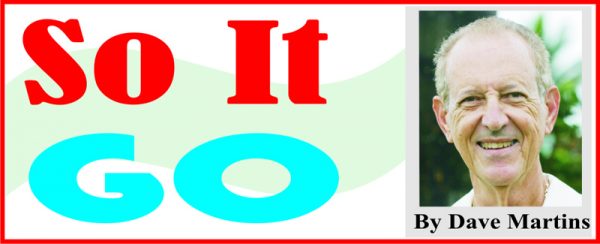
Later, as we moved to live at Vreed-en-Hoop, travelling daily to school in town, it was the Demerara River, with the government ferry boats – Querriman; Lady Northcote; and the small, appropriately named, Hassar – where we would watch the few small cars on deck, with wooden chocks holding them in place. Surely they would be pitched into the sea when the Hassar rolled – and roll it did, but the chocks held. The Demerara would range from being calm as a lake to a place of turbulent waves and engines straining, and the ferryboats displayed a cross-section of life – rich and poor, big and small. Back then, one would look out from the ferry and see the small sporty hydro-planes – a flat-bottomed boat with a huge outboard engine – rocketing across the river, raising a rooster tail of water.
I would later get a ride on one, through my Hoop friend, Tony Gomes, only to learn that the ride was actually a bumpy, even disturbing experience, as the flat bottom, hitting the water ripples at high speed, caused the boat to vibrate as if about to break apart; one trip was enough for me. And also, on two occasions, working at Atkinson Field for B. G. Airways, I took the R. H. Carr steamer from Georgetown to Timehri, a leisurely, almost sleepy, trip, that seemed to go on forever, with vendors offering goodies and passengers maneuvering to get a space to stretch out – a different river. I went back to the bus.
Early in my life, with my father a farmer in the Pomeroon, we would take the train to Parika, ferryboat via Wakenaam and Leguan, across the Essequibo River to Adventure, Kass’ bus to Charity, and small motor-boat to the farm, Martindale. The Pomeroon was always calm, except when another boat passed, and there was also a steamer to take you to Georgetown, but it was way longer than Kass – I never set foot on it.
At Vreed-en-Hoop, as well, I learned about the sprawling Boeraserie Conservancy west of us (I wrote about this previously), sometimes spent weekends there fishing, and came close to a disaster once when our motorboat hit a tacouba.
On the trips to Adventure by steamer, I learned, big time, about the power of the Essequibo. On that journey, near its mouth, we are often in conditions much like the open sea with powerful waves and cross winds. Travelling the same stretch later, heading to Mike Correia’s spread at Baganara, and across to Bartica, I would see the river in its fury, particularly on occasions when we would encounter squalls. People who take that trip frequently know it can be a very rough ride… a different river.
Of course, our waterways have another side: the one of meandering creeks and quiet stretches of river, and tiny waterfalls, such as Kumu, near Lethem, where life is pastoral and calm and we realize how astounding it is that the flow over the outcroppings, Kaieteur among them, continues around the clock, every day, slowing up in the dry season, perhaps, but never really stopping; every year, billions of gallons of water…coming from where? And then the array of creeks, literally all over the map, crisscrossing Guyana like veins on a hand. The one, for example, at Madewini, approaching Timehri, which can also be reached by trudging through the forest, west of the airport, leading you to a bend in the creek where you are in the forest canopy and swimming in the black creek water without seeing the sun. The creek experience is singularly Guyana, not seen in the region, except perhaps for Jamaica, where there is a semblance of it. Our creek waterways are a maze, almost a maelstrom. They spring up and meander, sometimes turn back on themselves, with constantly changing scenery, often with marine life, and frequently producing these delightful glades for repose, like the one I was introduced to at Dora, years ago, by my friend, Jerry Goveia (the Banks one), and lately by another friend, Raymond Khalil, who has a similar retreat at Dora with an open house and the creek, just down a gentle slope, to bathe or soak or simply chill. Or Siriki Creek, off the Pomeroon, another one of those winding-through-the-forest creations of nature, with the world shut out, and time falls away.
The river experience, as well. The Rupununi, roaring and tumbling at one point, soothing and somnolent the next. The Essequibo, raging and almost scary near the mouth where the Atlantic Ocean is very much in play, and then total calm at the crossing beyond at Kurupukari – if you’ve never been there, check the photographs like the recent one by Gary DaSilva on Facebook. It’s as if the hand of God, busy with creation, stopped in the work, taken by the view unfolding, and left it that way for us.
There are others: the waterfall sites of course, and, although I’m one of those Guyanese who has never seen them, our lakes. But from what I’ve laid eyes on, our rivers and creeks are a nirvana, partly from the complexity of them, for how they emerge and disappear and emerge again, but also for the magic of their source, ultimately from rainfall, yes, but the source makes for an even more magical world; and to think that it just happens? Just so? You have to know by now that I love the Caribbean – I have been shouting that for over 50 years – and there is so much wonder there (Grand Anse Beach in Grenada; the drive through the forest to Blanchiseusse in Trinidad; the landscape of St. Lucia from the west and up into the Pitons; the seacoast of Jamaica along Ocho Rios; the North Sound in Grand Cayman; the hillsides in Bequia; the east coast of Barbados) but they have nothing like our rivers and creeks; nothing.




